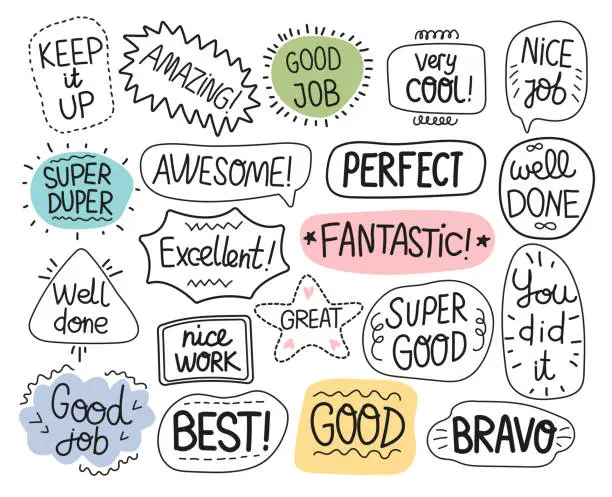
From Words to Meaning: Understanding the Dynamics of Human Interaction
- 0
Table of Contents
ToggleIntroduction
Communication is not merely talking, but the very soul of human being. Whether in an informal chit-chat or a business debate, we move from words to sense in each interaction. That includes more than just words, but also body language, tone, feelings, and cultural context.
How humans interpret meaning in words are the foundation of communication, conflict resolution, leadership, and relationship. In this article, we look at how one term used over another alters the meaning of something through simple language and educational tips backed by research and allusions to real-world examples.
Anyway here goes the essence of human interaction.
Communication between humans is not simple, it involves verbal and non-verbal cues. While it starts with word choice, it delves more into the delivery and reception of those words. Psychology says, of the communication, only 7% is verbal, rest 93% is split into tone (38%) and body language (55%).
So, when people hear words they need to make a jump to meaning and they do this based on a lot more than just vocabulary. So we need tone, gestures and eye contact combined with words to get a message across in everyday life.
The Evolution of Language: To Interact and to Think

Language is not only a tool to express our thoughts, but also a tool to shape our thoughts. Words have the power to change how we feel as we are saying them, and how others hear us. Research shows different languages affect cognition and perceptions of the world.
One topic that has sparked a lot of discussion is the issue of how much languages influence the way we think about things like space, time, and causality, as exemplified by work by Lera Boroditsky at Stanford University. This is because understanding our path from words to meaning involves acknowledging how language shapes perception and a form of human interaction.
Context: The Invisible Shaper of Meaning
Words have different meanings based on the context. One phrase can have multiple meanings including tone, environment, and existing relationship with the person. Context adds an extra level of subtlety, social conditioning may lead to something like, e.g., ‘we need to talk’ to feel or be interpreted as a dire problem while in another area of the world ‘we need to talk’ may be neutral, etc.
It is a demonstration that the travel from words to meaning is incomplete without context. Cultural, emotional or situational context dramatically changes how messages are received and responded to.
Listening as a Tool for Meaning Making

Communication is the act of which is not only talking․ Active listening enables one to grasp what speaker means. According to a study conducted by Wright State University, listeners who are passive listeners (those who focus on words only) will retain only 20% of a conversation while an active listener will hold on to 75% of it.
This easily shows that it is a reciprocal from words to meaning. Decoding the actual message requires listening carefully, asking clarifying questions and avoiding making assumptions, and this opens the door for deeper understanding to happen between people.
The Connection Between Non-Verbal Cues and Emotional Intelligence
Facial expressions, posture, eye contact, etc. are paramount non-verbal elements of meaning. If someone can read these cues, it indicates that he has some degree of emotional intelligence as well. A smile, for example, may indicate either agreement or sarcasm depending on the tone of facial expressions surrounding it. A study conducted by Dr.
Albert Mehrabian found that when it comes to communication feelings, the word itself is worth less than the non-verbal signals. Therefore, going from verbal to meaning requires developing sensitivity to the emotions and non-verbal communications that make communication more meaningful.
The Impact of Culture on Communication
Culture varies the method of relaying and reading the message. Indirect communication is more common in high-context cultures (Japan, China, etc.), while low-context cultures (the U.S, Germany, etc.) prefer directness. Miscommunication comes from people of different cultures trying to communicate with one another assuming one another knows how they are communicating. The meanings go beyond the words, and that requires cultural awareness.
All of this gives you a different perception of what is normal, and allows you to be respectful and have substantive communication, which is important in global environments in avoiding conflict between different norms, etiquette, and sometimes values.
Digital Communication: An Added Complexity

As we shifted into a world where we rarely put pen to paper, conveying meaning became increasingly difficult. Texting, emailing, using social media — they all miss tone, body language and even the immediate feedback that sitting across from someone would provide. To play it safe emojis and punctuation have become wonderful replacements for true emotion, but ambiguity looms.
According to Adobe, 76% of millennials have received a miscommunication through digital messaging. This highlights the fact that moving from words to meaning in a digital context, requires even more precision, emotional intelligence and message framing.
How Empathy Helped Us With Others
Empathy is a way to feel what others feel, and that is why it plays a central role in correct interpretation of meaning. When we empathize, we look past the literal words and focus on the emotions and experiences acquainted with the speaker.
Paraphrase: ThatMenshs research has proven that the nerosci?ence of empathy and also is able to spark mirror neurons in us to stimulate going back and mirror the energy of most around us, thereby making it possible for us to instinctively relate to all? This turns a process of moving from words to signification into a sympathetic act. When we apply empathy, we become better listeners, more respectful — and more effective — communicators.
Beneath grave, not-so-heavy titles, Barriers to Meaningful Communication
But along the way, things can happen that derail these efforts. There is often noise, unexamined assumptions, bias, emotional reactions and poor listening. In other words, confirmation bias makes us hear only what we want to believe, resulting in a different message than that intended by the speaker.
It is these barriers that render the transition from words to meaning more convoluted, which is why it is important during conversations to pause and reflect and clarify. Overcoming these challenges makes for greater empathy, and builds both personal and professional connections.
Conclusion: Bridging the Gap from Words to Meaning
Communication is a process that is alive — so much so that everything surrounding the context, emotion, and culture goes hand in hand, which is why communication can be incredibly tricky. It is an art and not just an information relay from one language to another. It requires empathy, active listening, and a certain cultural sensitivity.
Mastering this dynamic—in interpersonal relationships, in workplaces, or on digital platforms—enables people to speak their minds and articulate their thoughts but also to listen closely and comprehend others. When fortunate enough to have a strong command of communication, we can create more richly woven exchanges bursting with understanding and humanity by breaking down barriers.